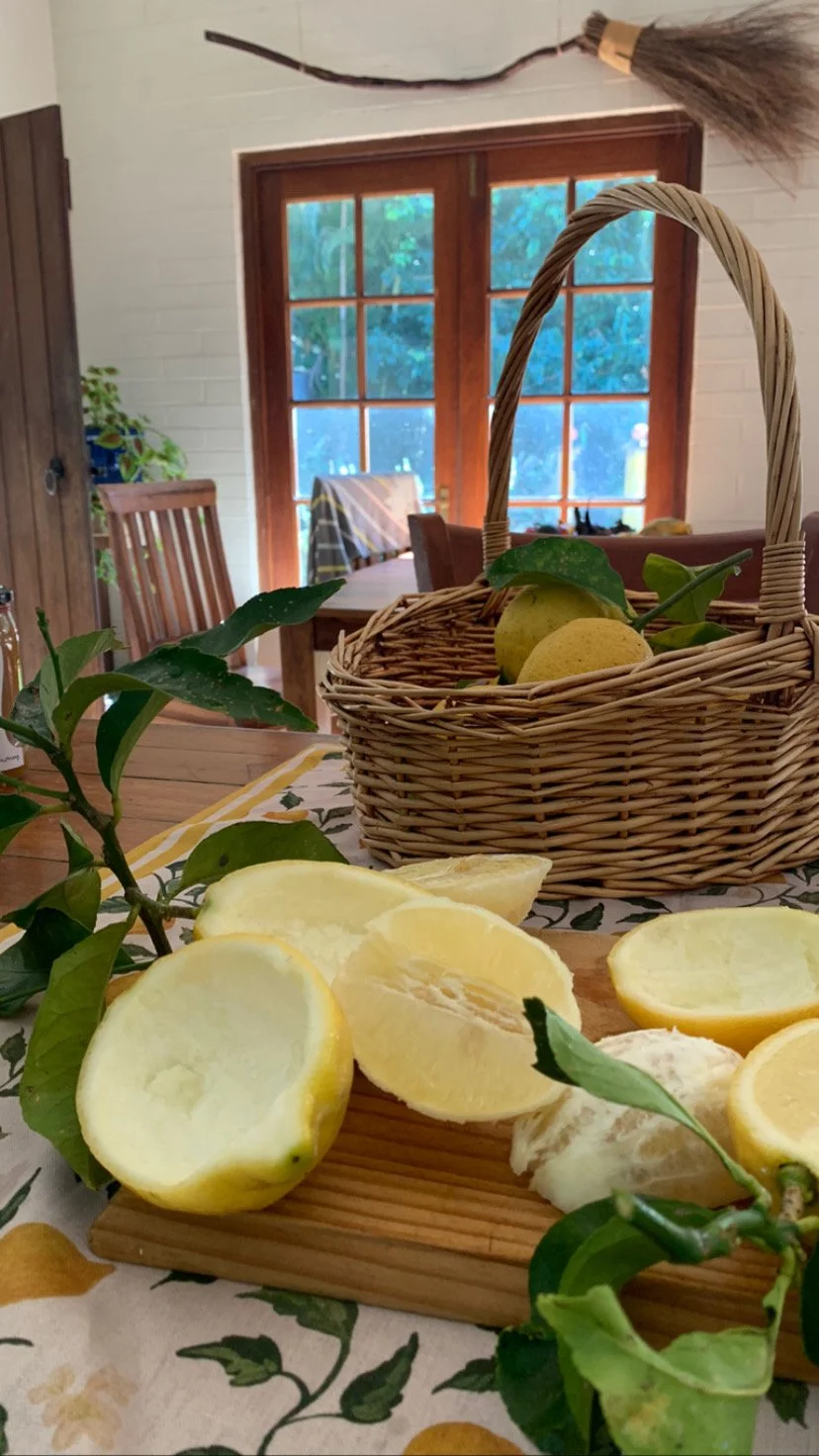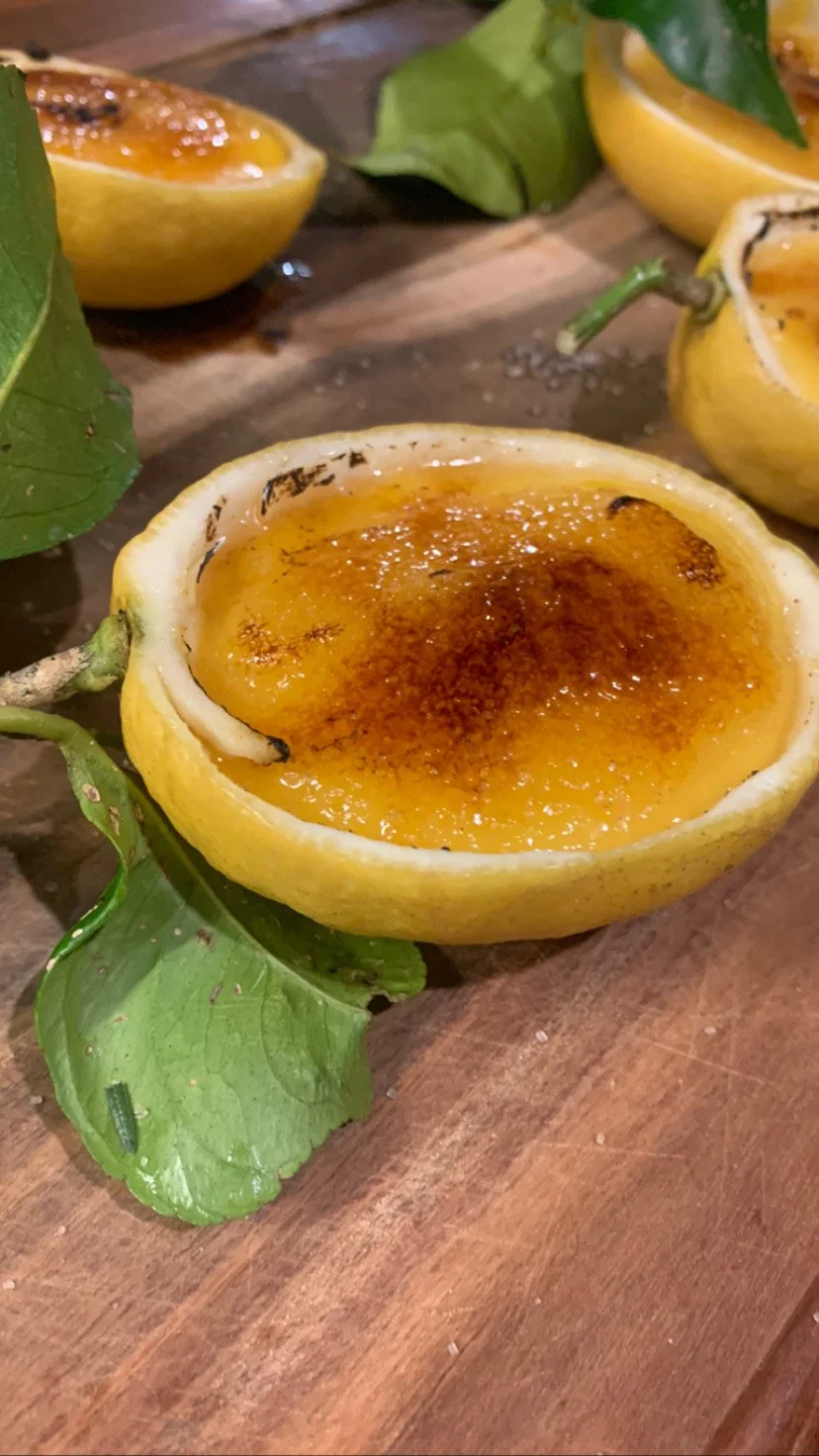Yellow things and offerings
This time of year, when the wattles just won't be ignored, it has a special name in the local Bunjalung calendar. Yarrgehmbu, the windy season. The breeze grows warmer by the day and carries the sweetness of Acacia and paper bark blossoms. The mornings are lighter, and a few hours after dawn but before the birds and bees notice is the best time to collect yellow powder puffs laden with nectar and pollen from your neighbourhood wattle trees for wild drinks, cakes, muffins, piklets and fritters. You might start to notice all the other spring awakenings taking place around you, dandelion flowers are abundant, lemons weigh down old trees. Spring is on her way. It's foragers delight to see the berries green with promise for the summer. And just like life and its cycles, so the wheel turns again. Aboriginal and Torres Strait Islander peoples, Australia’s First Scientists, have always held a deep understanding of the seasons, and of how to tell when seasons are changing. Wattles flowering is often seen as the first signs of the change.
Acacia represents the largest genus of flowering plants in Australia, with over 960 species. Like the eucalypts most people can recognise a 'gum tree' and most can recognise a wattle, at least when it is in flower. Again, like the many species of eucalypts, there are also many different species of wattles or Acacia. However, most people find it difficult to recognise the various species, even in their own area. Wattle it all means to me when I noticed today for the first time a turning of the wheel towards the light, towards birth, as I noted the bright green baby leaves of all my favorite mulberry trees growing forth and all the yellow things screaming out for my attention. European settlers collected wattle flowers and whipped them into piklets and small cakes or biscuits, the idea is just so tempting, finding information of species edibility is patchy, Not All species of wattle flowers and seeds are edible and in fact a couple are toxic. Safe and proper identification is as always absolutely paramount. Around my village of Cobaki in northern New South Wales I have both the fringed wattle or Acacia fimbriata which I know has edible flowers and seeds and also the coastal wattle or Acacia sophorae which I am still researching the edibility of. At my home currently I have wattles being dried and pressed for later use, and I have a wattle flower and whey soda brewing. I’ve heard that they ferment a great beer or wine also. I have decorated cakes and focaccia with wattle flower and made wattle flower and lavender biscuits sandwiched together by lemon buttercream. It feels as though these ideas flew in carried by the windy season to my kitchen bench and the foragers plate.
Beautiful things want to be made and shared, it's just their way. Offerings come from a special place. They are for spring, for the sun, for Brigid. Traditionally on the eve of Imbolc (1 August), gifts of honey and cakes along with a bowl of water were left outside on your doorstep for the Goddess Brigid to bless your health and beauty. Today I collected lemons and eggs and honey from my beautiful friend's place and a sneaky neighbourhood forage bagged me the lemons. At home the fixings for a Butterfly pea blue focaccia were already to go together with dabs of dandelion and wattle for yellow good measure. The lemons are spectacular baby head sized and I cannot resist the idea of serving the lemon curd inside the hollowed-out skins of the lemons themselves, and then finishing them with a blow touch and lots of granulated sugar to brulee the top. I have a cheat sheet for lemon curd that won’t disappoint even a goddess. Amazingly chuck everything in one bowl and microwave it. I know, I'm not usually a microwave cook myself but trust the process and more importantly trust Janelle Bloom. What follows is her recipe for the easiest lemon curd ever, it's a bit of magic really. Together with a very magical butterfly pea flower focaccia with wattle, dandelion, truffle salt, Fly agaric and cornflower petals. Like all good recipes this one came from the back of a 00 flour packet many moons ago; Focaccia art blog post to come soon with said recipe. But for now, let's cut to the curd. the addition of wattle flowers could be an native inspired twist on your lemon curd?
Janelle Bloom’s Lemon Curd recipe
Pretime:10min
Cooktime:14 min
Serves:4 Approx 2 cups
5 eggs Rind of one lemon
¾ cup castor sugar 125g butter cubed
¾ cup lemon juice
Whisk eggs and sugar together in large bowl until well combined.
While whisking, gradually add lemon juice and rind.
Add butter, cook uncovered, for 12-14 mins on 50% or untiull thick, whisking 2-3 times during cooking.
Foraging forever x
Chanterelle













